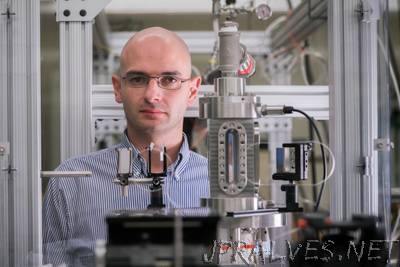
“What if the 450 nuclear power plants currently operating around the world could increase their energy output by 10 percent? It would represent a significant increase in carbon-free power production and the equivalent of billions of dollars in plant operation and construction cost savings. It’s also the primary research goal of newly-appointed Department of Nuclear Science and Engineering (NSE) Assistant Professor Matteo Bucci. The output boost would be accomplished by using microtechnology and nanotechnology to re-engineer the outer surface of reactor fuel rods to prevent bubbles in cooling water from coalescing on the rods’ surface, where they form dry patches that lead to failure. This would ensure the efficient transfer of heat from rod to water under a wider range of conditions, which in turn would allow reactors to run at higher power and produce more electricity while preserving wide safety margins. “It’s a way of getting more juice from the same lemon,” explains Bucci, who began his affiliation with NSE as a visiting scientist in 2013. Bucci was named a research scientist in 2015, earned his faculty appointment in the fall of 2016 and has participated for several years in the MIT Center for Advanced Nuclear Energy Systems (CANES), which is hosting the research effort. In a show of strong industry interest, Bucci and his project teammate, Evelyn Wang, an associate professor in the Department of Mechanical Engineering, are being funded by energy giant Exelon. Fuel vendor Westinghouse Electric is also collaborating on the project. The corporate support (which also covers CANES research into several other improvements to fuel rod cladding) spans three years, and the technology could be ready for initial deployment within five years.”
Link to article
